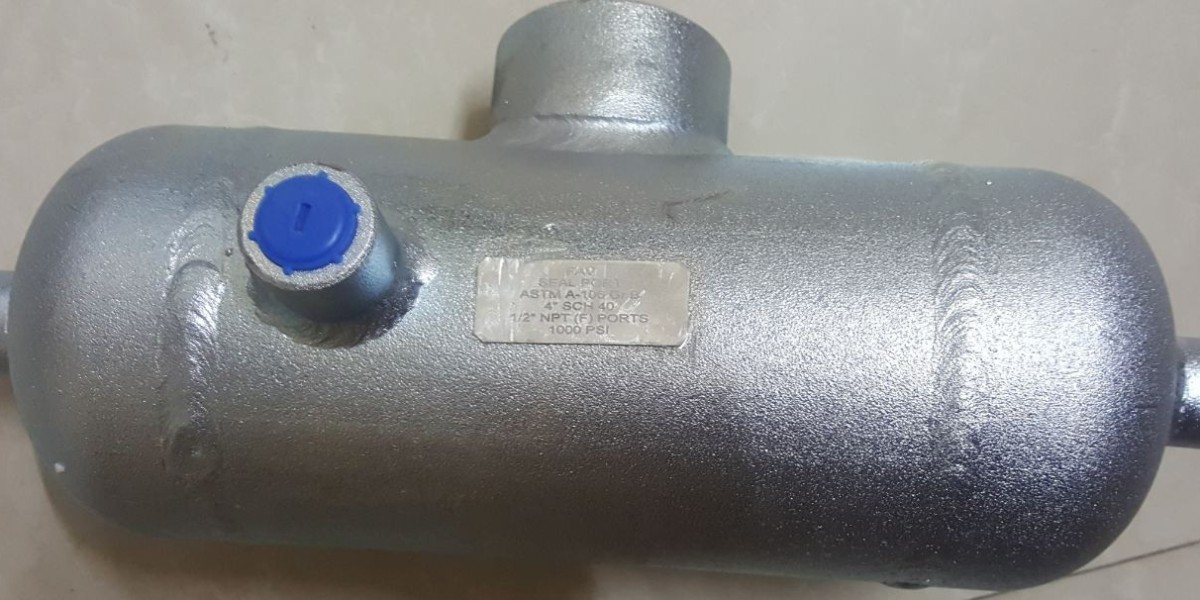When working with systems that involve steam, pressure, and temperature regulation, components like seal pots and condensate pots play a crucial role in ensuring safe and efficient operations. While both pots serve essential functions in industrial applications, their purposes, designs, and mechanisms are distinct. Understanding these differences is important for engineers and plant operators to choose the right component for specific processes.
What is a Condensate Pot?
A condensate pot is a device commonly used in steam systems to collect and store condensed steam, also known as condensate. It plays an important role in maintaining system pressure, ensuring smooth flow, and preventing water hammer in piping systems. The condensate pot collects steam that condenses from vapor, preventing the backflow of liquid and ensuring that only steam is passed through sensitive equipment, like pressure gauges, and valves.
Condensate pots are typically installed in the steam lines between the steam source and equipment such as pressure gauges and control valves. By collecting the condensed steam, these pots prevent any liquid from reaching the equipment, which could cause malfunctions, corrosion, or inaccurate readings. They allow for a smooth transition from steam to water, ensuring that no harmful or excessive condensate enters parts of the system that could be damaged.
The Function of a Condensate Pot
Condensate pots are designed to facilitate the smooth removal of condensate in steam systems. Their main functions are:
- Prevention of Liquid Entry: Condensate pots ensure that liquid condensate does not enter sensitive instrumentation or control systems, which could cause corrosion or incorrect readings.
- Preventing Water Hammer: By collecting condensate in steam lines, condensate pots help prevent the sudden slamming of water against pipe walls, known as water hammer, which can cause pipe damage and safety risks.
- Pressure Maintenance: They assist in maintaining a steady pressure in the system, allowing steam to flow effectively to equipment while controlling condensate accumulation.
What is a Seal Pot?
A seal pot, on the other hand, is typically used in systems where there is a need to prevent the backflow of gases or liquids. A common application is in pumps, where the seal pot ensures that no liquid or gas escapes into the environment while maintaining proper pressure in the system. Seal pots are used in pump seals, typically in high-pressure systems, to prevent the leakage of fluid while maintaining the seal integrity. In certain industries like oil and gas or chemical manufacturing, maintaining a tight seal is critical to prevent hazardous leaks and maintain system integrity.
The Function of a Seal Pot
Seal pots are often used in mechanical seal systems in pumps, compressors, and other rotating equipment. Their primary functions include:
- Maintaining System Pressure: Seal pots help regulate the pressure inside mechanical seals, ensuring that fluids do not escape from the system.
- Prevention of Leaks: By maintaining a positive pressure inside the mechanical seals, the seal pot helps prevent leaks of hazardous or valuable fluids.
- Enhancing Seal Longevity: The seal pot provides a buffer between the external environment and the mechanical seal, reducing wear and tear and extending the lifespan of the system.
Key Differences Between a Seal Pot and a Condensate Pot
While both seal pots and condensate pots are designed to manage fluids and gases in a system, there are several fundamental differences in their design, function, and application. Let's explore some of the key distinctions:
- Primary Purpose:
- Condensate Pot: The primary function of a condensate pot is to collect and store condensed steam, preventing liquid from entering sensitive equipment and maintaining system pressure in steam lines.
- Seal Pot: A seal pot is used to maintain pressure in mechanical seals or pumps, preventing leaks of hazardous or valuable fluids while enhancing the lifespan of the system.
- Design:
- Condensate Pot: A condensate pot is typically installed at the low point of steam systems where condensed steam can accumulate. It is designed to allow the condensate to be separated from the steam flow to protect equipment downstream.
- Seal Pot: Seal pots are designed for mechanical sealing systems, providing a pressure barrier between the sealed environment and the external surroundings. It maintains pressure in the mechanical seals, ensuring no leakage.
- Usage:
- Condensate Pot: Commonly used in steam systems, condensate pots are found in steam pipes and other systems where condensation occurs, ensuring smooth operation and accurate readings in instrumentation.
- Seal Pot: Seal pots are found in systems where there is high pressure and fluid control is essential, such as in pumps, compressors, and rotating equipment used in industries like chemical manufacturing, oil, and gas.
- Location:
- Condensate Pot: These are generally positioned in steam lines or between steam valves and pressure gauges to collect the condensed steam.
- Seal Pot: Seal pots are typically installed in pump systems and associated mechanical seal configurations, where they maintain the pressure inside the seals.
- Fluid Type:
- Condensate Pot: The fluid managed by a condensate pot is typically water or steam that has cooled and turned into liquid form.
- Seal Pot: Seal pots handle a wide variety of liquids or gases, often hazardous or pressurized, which need to be controlled within mechanical seals.
Conclusion
In summary, while both seal pots and condensate pots are essential in maintaining system integrity, their roles are quite different. Condensate pots focus on handling condensed steam, ensuring that liquid condensate does not interfere with sensitive instrumentation, while seal pots are designed to prevent leakage and maintain pressure in systems that handle hazardous or valuable fluids. Understanding the function and application of each component helps engineers and operators ensure the optimal performance and safety of their systems. Whether dealing with steam systems or high-pressure pumps, both pots contribute significantly to the overall efficiency and safety of industrial operations.
In steam systems, always ensure you are working with reliable components like a condensate pot to prevent operational disruptions, leaks, and equipment damage.



